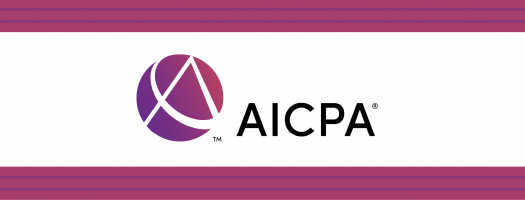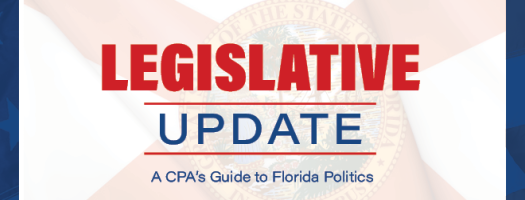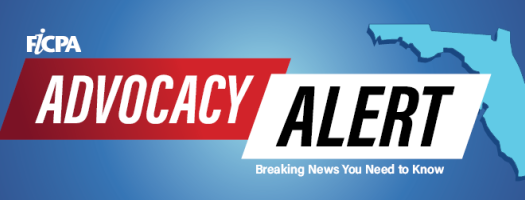WASHINGTON — Following feedback from taxpayers, tax professionals and payment processors and to reduce taxpayer confusion, the Internal Revenue Service today released Notice 2023-74 announcing a delay of the new $600 Form 1099-K reporting threshold for third party settlement organizations for calendar year 2023.
As the IRS continues to work to implement the new law, the agency will treat 2023 as an additional transition year. This will reduce the potential confusion caused by the distribution of an estimated 44 million Forms 1099-K sent to many taxpayers who wouldn't expect one and may not have a tax obligation. As a result, reporting will not be required unless the taxpayer receives over $20,000 and has more than 200 transactions in 2023.
Given the complexity of the new provision, the large number of individual taxpayers affected and the need for stakeholders to have certainty with enough lead time, the IRS is planning for a threshold of $5,000 for tax year 2024 as part of a phase-in to implement the $600 reporting threshold enacted under the American Rescue Plan (ARP).
Following feedback from the tax community, the IRS is also looking to make updates to the Form 1040 and related schedules for 2024 that would make the reporting process easier for taxpayers. Changes to the Form 1040 series – the core tax form for more than 150 million taxpayers – are complex and take time; delaying changes to tax year 2024 allows for additional feedback.
"We spent many months gathering feedback from third party groups and others, and it became increasingly clear we need additional time to effectively implement the new reporting requirements," said IRS Commissioner Danny Werfel. "Taking this phased-in approach is the right thing to do for the purposes of tax administration, and it prevents unnecessary confusion as we continue to look at changes to the Form 1040. It's clear that an additional delay for tax year 2023 will avoid problems for taxpayers, tax professionals and others in this area."
The ARP required third party settlement organizations (TPSOs), which include popular payment apps and online marketplaces, to report payments of more than $600 for the sale of goods and services on a Form 1099-K starting in 2022. These forms would go to the IRS and to taxpayers and would help taxpayers fill out their tax returns. Before the ARP, the reporting requirement applied only to the sale of goods and services involving more than 200 transactions per year totaling over $20,000.
The IRS temporarily delayed the new requirement last year.
Reporting requirements do not apply to personal transactions such as birthday or holiday gifts, sharing the cost of a car ride or meal, or paying a family member or another for a household bill. These payments are not taxable and should not be reported on Form 1099-K.
However, the casual sale of goods and services, including selling used personal items like clothing, furniture and other household items for a loss, could generate a Form 1099-K for many people, even if the seller has no tax liability from those sales.
This complexity in distinguishing between these types of transactions factored into the IRS decision to delay the reporting requirements an additional year and to plan for a threshold of $5,000 for 2024 in order to phase in implementation. The IRS invites feedback on the threshold of $5,000 for tax year 2024 and other elements of the reporting requirement, including how best to focus reporting on taxable transactions.
"The IRS will use this additional time to continue carefully crafting a way forward to minimize burden," Werfel said. "We want to make this as easy as possible for taxpayers. We will work to make the new reporting requirements easier for them, and we'll work closely with third party groups, tax professionals and others to find the smoothest path to ensure compliance with the law. This is consistent with our Strategic Operating Plan. The IRS is focused on meeting taxpayers where they are and helping them get it right the first time."
Expanded information reporting, which will occur as the result of the change in thresholds for Form 1099-K, is important because it increases tax compliance and can reduce burden on taxpayers seeking to follow the law. The IRS believes that expansion must be managed carefully to help ensure that Forms 1099-K are issued only to taxpayers who should receive them. In addition, it's important that taxpayers understand what to do as a result of this reporting, and that tax professionals and software providers have the information they need to assist taxpayers.
The IRS will continue to provide information on IRS.gov/1099k.
What this means
This means that for 2023 and prior years, payment apps and online marketplaces are only required to send out Forms 1099-K to taxpayers who receive over $20,000 and have over 200 transactions. For tax year 2024, the IRS plans for a threshold of $5,000 to phase in reporting requirements.
This phased-in approach will allow the agency to review its operational processes to better address taxpayer and stakeholder concerns.
Taxpayers should be aware that while the reporting threshold remains over $20,000 and 200 transactions for 2023, companies could still issue the form for any amount.
It's important to note that the higher threshold does not affect the actual tax law to report income on your tax return. All income, no matter the amount, is taxable unless it's excluded by law whether a Form 1099-K is sent or not.
Who gets the form
The Form 1099-K could be sent to anyone who's using payment apps or online marketplaces to accept payments for selling goods or providing services. This includes people with side hustles, small businesses, crafters and other sole proprietors.
However, it could also include casual sellers who sold personal stuff like clothing, furniture and other household items that they paid more than they sold it for. Selling items at a loss is not actually taxable income but would have generated many Forms 1099-K for many people with the $600 threshold.
This complexity contributed to the IRS decision to delay the additional year to provide the agency time to update its operations to make it easier for taxpayers to report the amounts on their forms.
What to do
The IRS Understanding your Form 1099-K webpage provides resources for taxpayers who receive a 1099-K, including what to do with a Form 1099-K and what to do if you get a Form 1099-K in error.
Taxpayers who receive a Form 1099-K should review the forms, determine if the amount is correct, and determine any deductible expenses associated with the payment they may be able to claim when they file their taxes.
The payment on a Form 1099-K may be reported in different places on your tax return depending on what kind of payment it is. For example, someone who is getting paid as a ride share driver could report it on a Schedule C.
People who sold personal items must determine if the amounts on their forms were losses or gains. If taxpayers are unsure of the original price, they can learn more on how to figure out the items worth and how to establish basis.
Selling personal items at a loss
If taxpayers sold at a loss, which means they paid more for the items than they sold them for, they'll be able to zero out the payment on their tax return by reporting both the payment and an offsetting adjustment on a Form 1040, Schedule 1. This will ensure people who unnecessarily get these forms don't have to pay taxes they don't owe.
If you sold personal items at a loss, you have 2 options to report the loss:
Report on Schedule 1 (Form 1040)
You can report and then zero out the Form 1099-K gross payment amount on Schedule 1 (Form 1040), Additional Income and Adjustments to Income.
Example: You receive a Form 1099-K that includes the sale of your car online for $21,000, which is less than you paid for it.
On Schedule 1 (Form 1040):
- Enter the Form 1099-K gross payment amount (Box 1a) on Part I – Line 8z – Other Income: "Form 1099-K Personal Item Sold at a Loss, $21,000"
- Offset the Form 1099-K gross payment amount (Box 1a) on Part II – Line 24z – Other Adjustments: "Form 1099-K Personal Item Sold at a Loss $21,000"
These 2 entries result in a $0 net effect on your adjusted gross income (AGI).
Report on Form 8949
You can also report the loss on Form 8949, Sales and Other Dispositions of Capital Assets, which carries to Schedule D, Capital Gains and Losses.
Selling personal items at a gain
If they were sold at a gain, which means they paid less than they sold it for, they will have to report that gain as income, and it's taxable.
If you receive a Form 1099-K for a personal item sold at a gain, report it on both:
- Form 8949, Sales and other Dispositions of Capital Assets
- Schedule D (Form 1040), Capital Gains and Losses
What should not be reported
Reporting is not required for personal transactions such as birthday or holiday gifts, sharing the cost of a car ride or meal, or paying a family member or another for a household bill. These payments are not taxable and should not be reported on Form 1099-K.
Additional information and resources
The IRS provides comprehensive information on the Understanding your Form 1099-K webpage that includes more details on receiving and reporting Forms 1099-K to help taxpayers navigate this complicated issue. In addition, the IRS will continue to update its communications, providing additional details soon.


